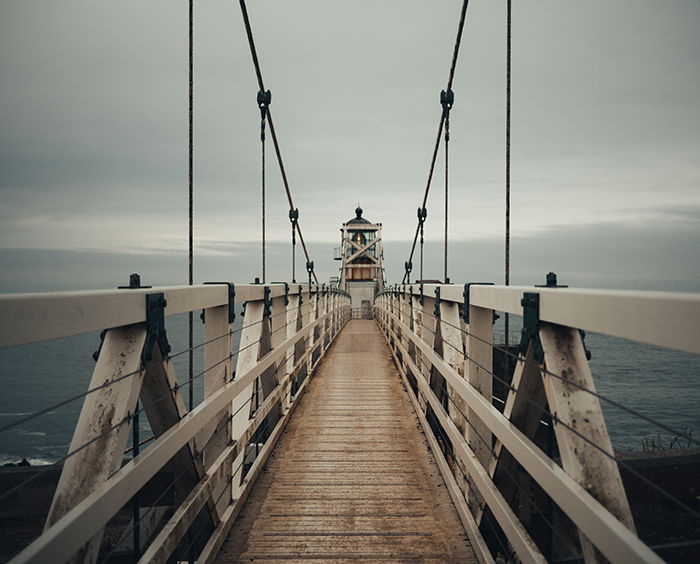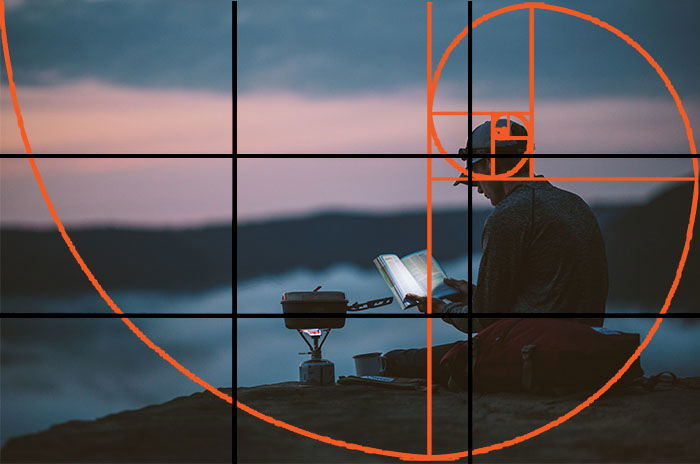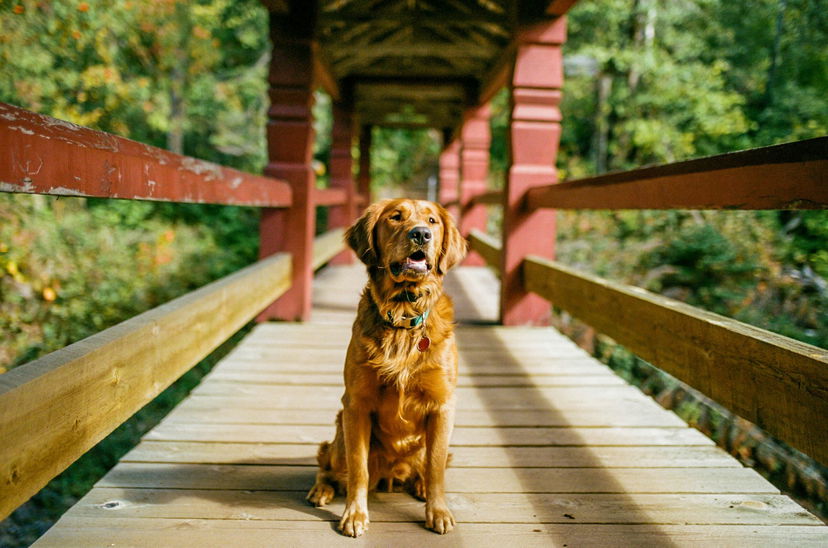What Is Symmetry in Photography? (How to Really Use It)
Using symmetry in photography is a great way to improve your composition skills. There are several different types of symmetry in photography. But even a small amount of knowledge on the subject can improve your photography results.
Symmetry is everywhere. You can find symmetry in natural landscapes or urban environments. And once you’ve trained your eye and have a basic understanding, you can use symmetry in all types of photography. Whether you’re interested in portrait, architecture, or food photography, you can use symmetry to strengthen your compositions.
This article explains what symmetry in photography is. We look at each type of symmetry, and we’ll show you how to put this knowledge to use when taking pictures. It’s the perfect starting point if you’re interested in symmetry in photography.
[courses category="Composition"]
The Importance of Symmetry in Photography
Symmetrical photos stand out because they’re attractive to the eye. Humans are drawn to certain types of visual aesthetics and compositions that promote a sense of harmony.
Symmetry does exactly that. It gives an image a harmonious feel, which draws the viewers’ attention and holds their gaze.
A simple photo of an apple might not be too exciting for you. But you can turn a simple fruit still life into an engaging composition with the help of your knowledge of symmetry.
Visual attraction isn’t the only thing that makes symmetry so important. With symmetrical photography, you’ll be able to find potential in the simplest things. You might get inspired by a symmetrical plant even if you don’t shoot still-life photography, for example.
A little knowledge of symmetry will improve your composition and help you find interesting shots in everyday situations. You can find symmetry everywhere, so it’s a matter of finding it and knowing how to use it.
In the photo below, the leading lines coming from the bottom corners of the photo naturally lead the eye to the lighthouse. As the lines are the same on both sides, they provide some symmetry.
Even though the clouds in the background aren’t perfectly symmetrical, they don’t ruin the image.
The lighthouse is perfectly in the centre, which helps with symmetry. But you also have the light at the top of the lighthouse shining on the left side, but not on the right. It’s a small point of asymmetry that makes the image feel more alive.
Symmetry isn’t always about perfection, but it can be used to enhance compositions of all kinds. In fact, having elements of asymmetry can improve composition, adding more tension, vitality, or humour to your shots.

Another benefit to understanding symmetry is knowing how to work with lines and shapes. A seemingly busy location can look perfect if you know where to shoot from.
Knowing how to use lines, shapes, and patterns also helps you add depth and meaning to your photos. Instead of looking flat, your compositions will have shape and meaning. This makes your symmetrical images stand out even more.
Once you learn how to take symmetrical photos, you can use your newfound skills to find your own style. For example, as a landscape photographer, you can use symmetry to create powerful compositions with reflections.
Most Common Types of Symmetry in Photography
Symmetry exists in different forms, from simple rotational symmetry to more complicated fractal symmetry.
You can experiment with as many types of symmetry as you like. Here are the most common ones that many photographers like to use to enhance their photos.
Vertical Symmetry
Vertical symmetry is the most common type of symmetry. Draw an imaginary vertical line at the center of your composition. If both sides are symmetrical, your photo will look visually appealing.
Vertical symmetry doesn’t always have to focus on the center of your composition. Take a look at the photo of the books below. They’re located at the bottom of the photo, which makes the photo asymmetrical on the horizontal plane. But you can take a more conventional approach and make sure that your subjects are centered.
Vertical symmetry is often used in architectural photography. It emphasizes the size, shape, and design of buildings.

Horizontal Symmetry
Take your imaginary line and place it horizontally at the center of your composition. Horizontal compositions are often used in landscape photography. And they’re perfect when a body of water is present.
This can be confused with reflective symmetry. The difference is that horizontal symmetry doesn’t necessarily have to feature a reflection. Reflective symmetry always does.

Radial Symmetry
If you’re mesmerized by circular shapes, you’ll love radial symmetry. This type of symmetry usually involves shapes that go around and around with the same patterns.
This is often associated with ripples. But it can also be used to photograph succulents, domes, wheels, etc.
You can also combine several kinds of symmetry to take your photos to the next level. For example, the photo below features both radial and vertical symmetry.

Reflective Symmetry
As its name suggests, reflective symmetry is all about reflections. You can find reflections in water, glass surfaces, and buildings.
Look at the photo below. The left side of the photo is the actual highway, while the right side of the photo is the highway reflected off the glass of the skyscraper.

Artificial Symmetry in Photography
You can create symmetry with the help of an app or an editing program. Artificial symmetry is fun to work with. Especially if you’ve already taken photos that aren’t symmetrical or if you just want to test your creativity.
I wouldn’t recommend using artificial symmetry in photography too often. It may stop you from improving your skills and finding creative potential elsewhere. But it’s a great technique to use from time to time.
In architecture photos, for example, airplanes and birds are often added to symmetrical photos. This emphasizes symmetry and fills the negative space.

Symmetrical Photography Inspiration
Here are a few ideas to spark your creativity. Use them as inspiration to embrace symmetry in photography.
Look for Symmetry at an Event
You should definitely experiment with architectural, landscape, and still-life photography when you take symmetry photography. But you should also try to be spontaneous, especially when you’re at live events.
The unpredictability of events can lead to a lot of unexpected photo opportunities.
Look at the photo below. The photographer created symmetry using fireworks, which usually last a few seconds. This is a great example of horizontal and reflective symmetry.

Make Your Own Symmetrical Lines
You might not be able to find symmetry in nature all the time. And if you can’t, you can create your mini studio and take symmetrical photos at any time.
Make a DIY light box or create a flat-lay background and emphasize symmetry by placing an object on those lines.
This will help you improve your symmetrical photography skills. Using a DIY studio like this will also help you become a better studio photographer.

Take a Symmetrical Self-Portrait
Symmetry in photography is often associated with non-living objects like buildings. But it can also include people.
Self-portraiture is a fantastic way to get better at finding good compositions without always being behind the camera. If you don’t want to show your face in your self-portraits, you can take photos of your silhouette, like in the photo below.
To make the process easier, make sure you use a sturdy tripod and a remote. Since you’ll have to focus on posing and symmetry at the same time, try to simplify the rest of the photo. The more comfortable you feel, the easier it will be to take photos you’ll be proud of.

Find Symmetrical Lines in Animal Photography
If you want to challenge yourself even more, focus on finding symmetry in animals. If you don’t have easy access to wild animals, you can take photos of pets instead.
Animals can be very difficult to work with because they don’t pose for the camera. This will make your photo shoot harder. But it will also make your successful shots more unique than a simple still-life photo. Many animals have perfectly symmetrical faces, which makes them the ideal subjects for vertical symmetry.

Take a Photo of Your Favorite Building
You can’t get into symmetrical photography without experimenting with architectural photography at least once in your life. Even if buildings don’t inspire you, try to see potential in them. Take the time to find patterns and space and incorporate them into your photos.
The best way to achieve this is to photograph a building that speaks to you. This could be your childhood home, a unique tourist attraction, or any building that makes you feel happy.
Focus on colors, height, depth, and details. Take photos of the building at different times of the day. Your results will not only reflect your skills but also capture something that means a lot to you.
This quaint building stands out because of its symmetry, vibrant colors, and warm lights on the first floor. Unusual buildings that stand out from the crowd are the perfect subjects for symmetrical photography.

Challenge Yourself by Taking Photos With Your Smartphone Camera
Smartphone photography is becoming more and more popular. This is thanks to technological advances and social platforms like Instagram.
This doesn’t mean you have to ditch your beloved camera equipment and become a smartphone photographer. But temporarily replacing your DSLR with a smartphone might help you look at the world from a new perspective.
If you don’t like smartphone photography, you can still use it to your advantage. If you travel a lot, you can take snapshots of locations that you want to revisit later. You can then observe your results to come up with compositional ideas. And then you can return to the locations fully prepared.

Conclusion—Using Symmetry in Photography
Symmetrical photography will show you how to add more depth, vibrance, and clarity to your images. You don’t have to pursue symmetry in photography your entire career. But give it a try at least once, especially if you’re stuck in a photography rut. Your skills will improve, and you’ll have fun trying to find symmetry in your surroundings.
[courses category="Composition"]






